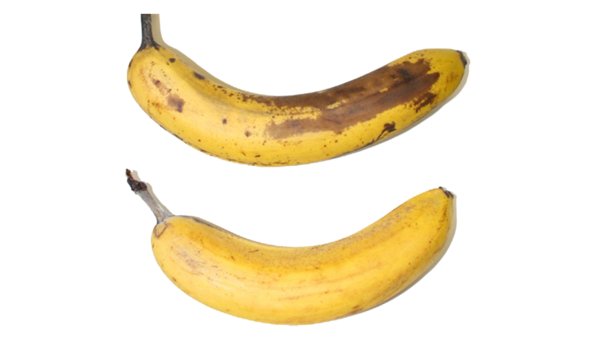- Share this article
- Subscribe to our newsletter
Food waste reduction– ecological coating for bananas
Plastic packaging in grocery stores protects fruits and vegetables from spoilage, but also creates significant amounts of waste. Together with the retailer Lidl Switzerland, researchers of the Swiss Federal Laboratories for Materials Science and Technology (Empa) have now developed a protective cover for fruit and vegetables based on renewable raw materials. For this project, Lidl chose Empa as a partner because it had decades of research experience with cellulose products.
Keeping fruits fresh at home
In Empa's Cellulose & Wood Materials laboratory, the researchers spent more than a year developing a special protective cellulose coating that can be applied to fruits and vegetables. The coating keeps fruits and vegetables fresh significantly longer. In tests, the shelf life of bananas, for instance, was extended by more than a week. This significantly reduces food waste. "The big goal is that such bio-coatings will be able to replace a lot of petroleum-based packaging in the future," says Gustav Nyström, head of the Empa lab.
Production from press residues
The idea is to process pomace into fibrillated cellulose. Pomace is the solid residue left over after extracting the juice from fruit, vegetables or plants. Previously, this plant leftover was disposed in biogas plants or directly in the field; in the future, it will be used to create a protective coating for fresh fruit.
The coating is either sprayed onto the fruit or applied to the produce as a dip and is easy to wash off. As it is harmless for the consumer, it can also be eaten without any danger. The potential of cellulose coatings is by no means exploited yet; there is the possibility of including additives such as vitamins or antioxidants in it.
Last summer, the highly promising preliminary study, which had been ongoing since 2019, was successfully completed, and the main study was launched. The cellulose layer developed at Empa will be tested and further improved over the next two years together with Lidl Switzerland and a Swiss fruit and vegetable supplier.
The project is supported by Innosuisse, the Swiss innovation agency. The aim is for the new technology to be used in all 150 Lidl stores throughout Switzerland following the successful main trial.
(Empa/wi)
Literature:
Luana Amoroso, Kevin J. De France, Corina I. Milz, Gilberto Siqueira, Tanja Zimmermann, Gustav Nyström: Sustainable Cellulose Nanofiber Films from Carrot Pomace as Sprayable Coatings for Food Packaging Applications
ACS Sustainable Chem. Eng. 2022, 10, 1, 342–352, Publication Date: December 15th, 2021
Read also:
C Shrivastava, E Crenna, S Schudel, K Shoji, D Onwude, R Hischier, T Defraeye; To wrap or not to wrap cucumbers? Preprint (2021)





Add a comment
Be the First to Comment